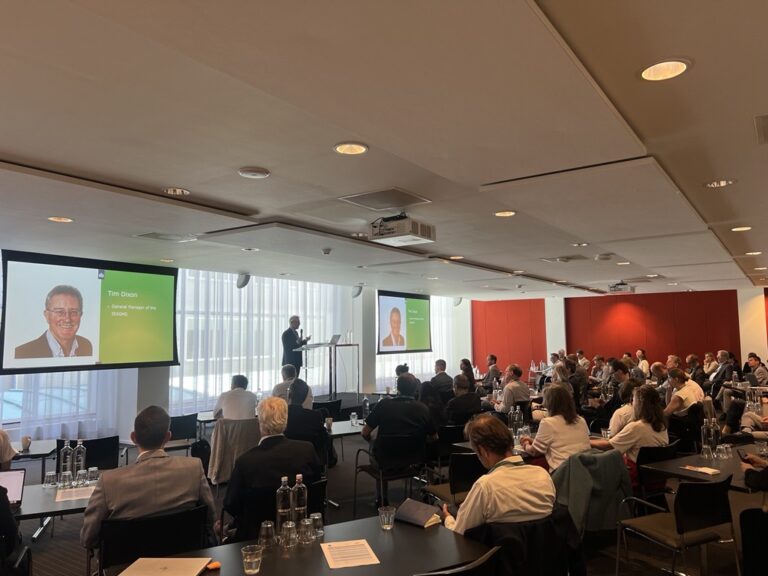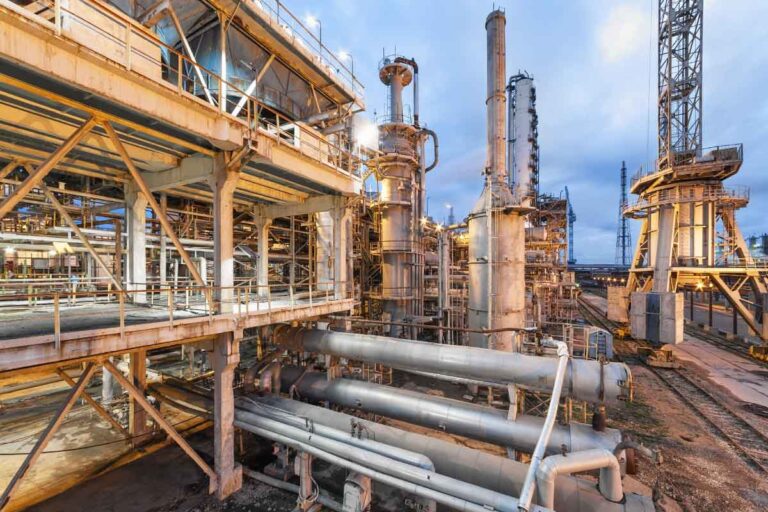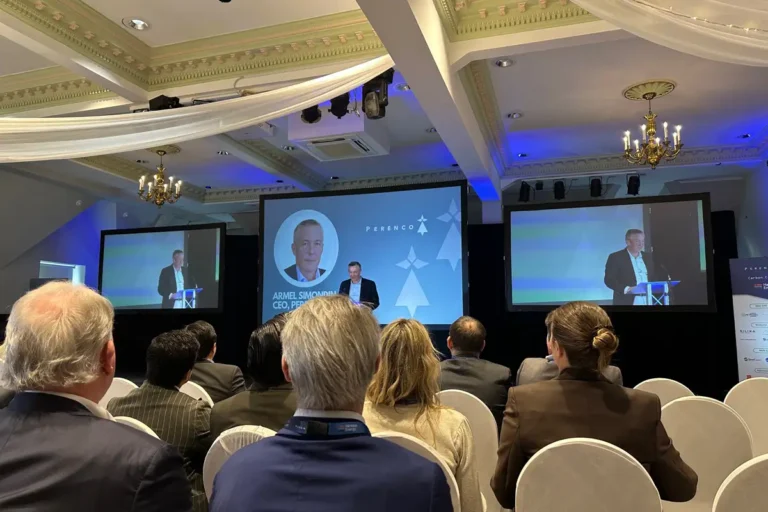
US DOE NETL Carbon Capture Project Review Meeting
2 November 2020


The US DOE’s National Energy Technology Laboratory held its annual 3-day “Carbon Capture Review Meeting” from 5 to 7 October 2020. The aim of US DOE/NETL’s Carbon Capture Program is to develop the next generation of advanced CO2 capture concepts. The meeting offers an opportunity for participants to share progress made and to discuss with peers many of the impressive range of projects and activities funded by the Programme.
Lynn Brickett, Carbon Capture Programme Manager, opened proceedings by introducing John Litynski, Deputy Director for the Office of Advanced Fossil Technology Systems , who would inform listeners on the US DOE’s strategic focus on hydrogen.
Hydrogen, like electricity, is an energy carrier. In the United States, fossil fuels plays a major role in the production of hydrogen and would likely continue to do so. When combined with CCS, fossil fuels can be used to generate carbon-free electricity and a range of carbon-free products. The United States produces around 10 of the 72 Mtonnes of hydrogen produced globally each year; with 96% produced from steam methane reforming (SMR), 3% from coal gasification and 1% from electrolysis (compared with 76%, 22% and 2%, globally).
Potential markets for hydrogen range across the power, transport, industrial, chemicals and buildings sectors, with economics based on cheap fossil fuels a key driver. For example, analysis suggests that while hydrogen produced from the gasification of coal (no CCS) is estimated at $1.34/kg, with CCS, the process is carbon free would cost around $1.63/kg.
In July 2020, the US DOE published its “Hydrogen Strategy: Enabling a Low-Carbon Economy“, which summarises the current status of hydrogen technologies and lays out the Department’s strategic plan to accelerate the R&D and deployment of hydrogen technologies in the United States.
Under the Coal FIRST initiative, energy plants will incorporate CCUS technologies and be able to generate carbon-neutral electricity or hydrogen. Work is underway to reduce the cost of CO2 capture from coal gasification, with pre-combustion capture set to play a significant role. Reducing cost will remain a priority, e.g. in reducing the cost of producing oxygen. It was also noted that while the co-firing of MSW and plastics would reduce cost it would also lower carbon emissions.
Generating electricity from hydrogen presents many technical challenges. Its characteristics affect many components of turbine combustion systems. Current R&D and testing is focused on addressing these challenges, e.g. on the combustion of 100% hydrogen and on turbine retrofit packages. An attractive option to produce hydrogen at high efficiency being explored is the Solid Oxide Electrolysis Cell (SOEC), a kind of reverse operation solid oxide fuel cell (SOFC) system.
With its high energy density and low volumetric density hydrogen is tougher to transport and store than, say, natural gas. Its distribution, whether by pipeline, tanker or small cylinders will require a massive expansion to meet the ambition for increased hydrogen use. While hydrogen may supplement natural gas in pipelines at present, 100% hydrogen transport is targeted. Storage will also be critical, with innovative approaches needed to store large quantities of hydrogen, e.g. in geological reservoirs.
In short, hydrogen is a hot topic for the US DOE at this time, with the whole chain from production, through transport and storage to end-use gaining considerable attention.
Lynn Brickett next introduced Dan Hancu, NETL’s Technology Manager for Carbon Capture, who would present an overview of the Carbon Capture Program. The Programme’s mission is essentially to develop advanced, cost-effective carbon capture technologies throughout the power-generation sector and to ensure the United States continues to have access to safe, reliable and affordable energy from fossil fuels.
Since its inception, the Carbon Capture Program has moved through several phases of development. Current efforts cover not only improvements to state-of-the-art, first-generation technologies, but also the development of second-generation and transformational advanced CO2 capture technologies. An integrated approach is taken to develop capture technologies, with development funded through the various stages from laboratory & bench scale, through small pilot, large pilot to FEED studies. In addressing the challenges presented, a major focus is placed on reducing technology costs and risks.
A broad range of capture technologies are being developed that include hybrids, membranes, solvents, sorbents and novel concepts, with solvent-based capture having gained most attention to-date.
Funding opportunity announcements (FOAs) issued in FY19 and FY20 have seen support awarded to capture projects for coal and natural gas power and for industrial sources. More recently, funding has been awarded to projects for technologies that remove CO2 from the atmosphere, a process known as direct air capture (DAC). Efforts underway aim to reduce the cost and complexity of DAC, which are currently high due to the very low concentration of CO2 in the atmosphere.
Importantly, effort has also been given to enabling capabilities, e.g. the Carbon Capture Simulation for Industry Impact (CCSI2) project, techno-economic assessments (TEAs) and life cycle analysis (LCA).
Dr. Hancu informed workshop participants of the Programme’s Carbon Capture Newsletter, the first of which being the recently published October 2020 edition, and of the Programme’s R&D Compendium, that provides a technical summary of the Carbon Capture Program, assembling descriptions of all its CO2 capture technology R&D projects in a single document.
The meeting proceeded with presentations sharing up-to-date progress on many of the programmes and projects currently in receipt of funding. Updates on enabling capabilities were given by:
- Scott Litzelman (ARPA-E), who presented the Flexible Carbon Capture and Storage (FLECCS) Program, with its goal of developing CCS technologies that enable power generators to be responsive to grid conditions in an environment featuring a high penetration of variable renewable energy (VRE) technologies.
- Benjamin Omell (NETL), who described the Carbon Capture Simulation for Industry Impact (CCSI2) project and its collaboration with industrial, academic and government partners to disseminate a rigorously quantified understanding of CO2 capture systems, manage risk and reduce the barriers to technology commercialisation;
- Tim Fout (NETL), who provided an update on NETL’s carbon capture techno-economic analysis, focusing mainly on their recent work on BECCS. In this work, particular attention is paid to developing and applying a consistent method for evaluating the relevant technical and economic parameters;
- Derrick Carlson (NETL), who updated participants on NETL’s LCA activities. The significance of LCA when investigating negative emissions technologies was highlighted. Importantly, one of the primary aims of their work is to support recipients of funding from the Carbon Capture Program with their LCA requirements.
| Focus on Day 2Presentations on 6 October covered post-combustion and pre-combustion technologies. The session on post-combustion opened with the presentation on FLECCS, where the value of CCS was highlighted as of significant importance. FLECCS is a 2-phase programme with a total duration of approximately 4½ years. The objective of this initiative is to study the flexibility of CCS systems installed on natural gas to integrate with renewables in order to decarbonise electricity in a high-VRE grid. The CO2 capture cost was presented as a function of the CO2 concentration in the flue gas and of the capture rate, while the grid modelling is based on the capacity expansion or the production cost. Capture technologies based on membranes, sorbents, DAC and new materials were explored.Later in the day, the CCSI2 project was presented. Attendees were updated on project activities, including industrial collaborations, new project partners, equipment and process modelling, optimisation and control frameworks, and the CCSI2 toolset. The use of CFD models as a tool for the development of CO2 capture systems was presented. The project team is investigating the trade-off between increasing the solvent-based chemical absorption performance and increasing equipment size. Advanced manufacturing studied with the CCSI2 toolset will be integrated with advanced packing geometry, modelled through CFD, to study its impact on the process.As with established practice, testing centres were included in the collaborative funding initiatives. Jeannine Elliott (TDA Research) presented results from pilot-scale testing at NCCC (sorbent based post-combustion capture) and TDA’s simulated moving process. The parametric testing is nearly complete, where an increase on the CO2 capture rate was possible through process variations. Results would be used to update the techno-economic analysis.With regard to pre-combustion technologies, gasification systems were described together with different CO2 capture systems. Gokhan Alptekan (TDA Research) presented on sorbent-based pre-combustion technology for integrated gasification combined cycle (IGCC) power plants. The objective was to demonstrate the techno-economic viability of the technology by evaluating its technical feasibility in 0.1 MWe slipstream tests (150 hours of testing over 1,000 adsorption/desorption cycles using the same temperature as used at NCCC) and carrying out high-fidelity process design and engineering analysis, including CFD analysis. Based on the results, the team identified a potential for further efficiency improvements via integration with WGS, with several process areas showing advantages of applying high temperature CO2 removal, while achieving an 86% CO2 removal efficiency.Kathryn Smith (NETL) presented the IGCC power plants for the future, including modular design (considering different CO2 capture technologies and processes), diverse feedstock, polygeneration, and solutions tailored to the location. Via economic screening, it was identified that the main disadvantage of the modular approach was the loss of economy of scale. CO2 capture processes were identified for different gasification processes and end-use applications. Research showed the global demand for coal gasification processes was increasing. Modular-scale gasification could be advantageous for manufacturing at lower costs, with deployment of multiple small-scale gasifiers offering advantages (e.g. use of different feedstocks). It was concluded that IGCC power generation could provide low-cost, low-emission energy from locally-sourced coal with superior carbon capture capabilities.The final presentation of the day came from Phillip Koech (Pacific Northwest National Laboratory), who shared results on the use of CO2BOL HP solvents that, through pre-combustion, were able to capture more than 90% of CO2 emissions with an energy penalty below 0.7 Gt/tCO2, with the aim of achieving a cost of electricity 30% lower than the baseline capture approaches. With preliminary TEAs completed, next steps would include further material testing and a consolidated TEA.In summary, advances on post-combustion and pre-combustion technologies were presented during the second day of NETL’s Carbon Capture Project Review Meeting. Modelling and testing are building up synergies to optimise emerging and mature CO2 capture systems. Compared to low-carbon strategies implemented in other regions, these projects show possibilities to obtain low-emissions power using coal and in combination with other local feedstocks. Moreover, different CO2 capture technologies are in development and can potentially contribute to future large-scale CCS projects. |
Given the increasing focus on DAC as a carbon removal technology, a Government Panel discussion on the topic was moderated by Dan Hancu. Panel members comprised Heather Willhauer (Naval Research Laboratory), Zara L’Heureux (ARPA-E), Lynn Brickett (US DOE Office of Fossil Energy), Dan Matuszak (US DOE Office of Science) and Devinn Lambert (US DOE Bioenergy Technologies Office). As each of the agencies represented on the panel were undertaking activities on DAC, the intention was for each panellist to present briefly their experience on the topic. Discussion would then ensue on means to bring a more cohesive approach to RD&D on DAC.
Heather Willhauer’s work at NRL was focused on direct ocean capture (DOC), with the main objective of enhancing energy and fuel security on behalf of the Department of Defense. CO2 is captured from seawater, where the concentration of CO2 is a factor of 140 higher than the concentration in the air. The plan would be for CO2 to be combined with blue hydrogen to produce synthetic fuels. With insufficient resources currently available at NRL, she felt the broader DOE experience on DAC might be leveraged to identify and support technologies to enhance energy and fuel security.
At ARPA-E, Zara L’Heureux’s work focused on both DAC and DOC. Strategically, these technologies had been identified as economic backstops to address CO2 sources that were difficult or prohibitively expensive to capture using other means. For example, of the 5.2 Gt CO2/year emitted in the United States, a proportion was released in small quantities from small point sources. Areas of interest at ARPA-E focused on capture materials, novel air contactors and novel process design.
Lynn Brickett said that NETL had been working on DAC since around 2016-17. She pointed to the 2019 calls for research on DAC and the TEA/LCA work of NETL’s systems engineering and analysis groups. Previous FOAs had led to some good work, exemplified by the presentations made earlier by Miles Sakwa (Global Thermostat) and Christoph Beauttler (Climeworks). She felt the 2020 congressional language covering negative emissions technologies provided space for NETL to expand their efforts on both DAC and BECCS, and to build upon the portfolio of work already undertaken. She added that there had already been significant coordination and collaboration between the agencies represented on the panel.
Dan Matuszak said that work at the Office of Science was focused predominantly on the fundamental science, on the basic research that lays the foundations for new energy technologies. Work on DAC fell under the Basic Energy Sciences Program, where strategic research areas had been identified and the major challenges of DAC technology were being investigated.
In the Bioenergy Technologies Office, Devinn Lambert’s work focuses predominantly on advanced algal systems. She said that integrating DAC with algal systems has the potential to produce low-cost, low-carbon biomass-derived fuels and bioproducts. Modelling is employed to inform the strategy adopted in her work that seeks to solve societal challenges using algae.
At the end of the panel discussion, all participants declared their ambition to continue to cooperate closely in their efforts to develop DAC and to identify areas where joint activity would be beneficial to that aim.
NETL has now issued formal proceedings for his event on its website (accessed 2 November 2020).
Monica Garcia Ortega and Keith Burnard
Other articles you might be interested in
Get the latest CCS news and insights
Get essential news and updates from the CCS sector and the IEAGHG by email.
Can’t find what you are looking for?
Whatever you would like to know, our dedicated team of experts is here to help you. Just drop us an email and we will get back to you as soon as we can.
Contact Us NowOther articles you might be interested in
Get the latest CCS news and insights
Get essential news and updates from the CCS sector and the IEAGHG by email.
Can't find what you are looking for?
Whatever you would like to know, our dedicated team of experts is here to help you. Just drop us an email and we will get back to you as soon as we can.
Contact Us Now









